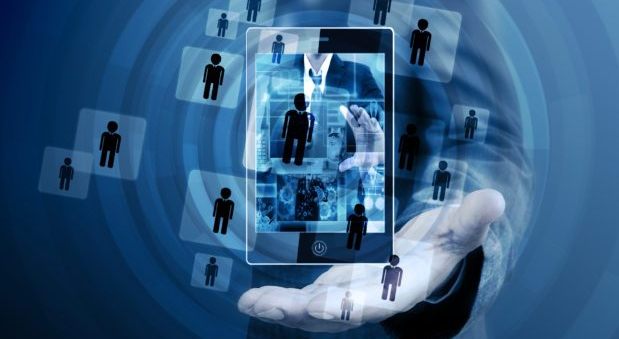Mobility drives digital transformation through a radical rethinking of how an organization uses technology in pursuit of new revenue streams or new business models. The drivers tend to be disruption from market newcomers or innovation from rivals seizing the opportunity to win new customers.
Technology alone does not drive digital transformation
Rather, businesses must reshape the way they strategize, utilizing technology to find more efficiencies and opportunities for collaboration.
Mobility drives digital transformation can also be explained as the way in which technology is impacting how we interact with the world. Mobility, in its broadest definition, is that smart and connected technologies can eliminate the friction in business processes and no doubt is the key enabler of digital transformation.
It is evident that Mobility has emerged as a business-critical platform that is driving digital transformation. Therefore companies must adapt or risk being left behind by their competition.
Mobile is the face of digital
Mobile came and conquered in many industries, audiences, traffic, and transactions—both in numbers and dollar values. In 2017, mobile evolved from a standalone channel to a baseline for all digital experiences. Mobile continues to elevate customer expectations and there is no question that mobile moments are the battleground to win, serve, and retain your customers.
App usage as we know has peaked in 2017 beginning to take on monolithic apps to offer more convenient mobile experiences. Ecosystems like Amazon Alexa, Apple iMessage or Siri, Facebook Messenger, and WeChat offer convenient access to content and services through conversational interfaces. As consumers spend more time within mobile-enabled experiences and ecosystems, these platforms dominate mobile strategies.
Understanding the importance of Enterprise Mobile strategy
Mobile software engages people. Enterprise Mobility enables employees to connect into core processes and participate even if they are not sitting at their desks. Enterprises that have not yet incorporated these strategies will struggle with anything in digital transformation.
From consumer software like mobile apps and social media to digital photography to gaming, we engage more with technology if we can take it with us. In an industrial or business setting, an enterprise software that can be accessed using a mobile device turns this increased level of engagement into specific benefits that could represent opportunities for digital transformation in many industries.
Mobility is important because of it:
- Improves customer experience in field service environments.
- Increases the productive time of technical staff by allowing them to interact with systems like enterprise asset management or computerized maintenance management systems while in the field or at the machine on the plant floor.
- Improves the amount and quality of information available to those servicing assets or customers, allowing more efficient service and first-time-fix in field service environments and more reliable troubleshooting and less downtime in a plant environment.
- Induces users to engage with software systems more frequently, increasing return on investment in enterprise software.
Lacking support for the mobile enterprise, companies will be prevented from digitally transforming their operation in many important ways, for example, the total cost of maintaining capital assets will be higher and the quality of asset data will be lower than in organizations with less enterprise mobility.
Lead your digital innovation by taking control of your Mobile Destiny
- Mobile-first approach: Forrester report suggests to embrace a “mobile-first,” if not “only,” approach to design and delivery. As per their prediction, fast followers will embrace a mobile-first or -only approach delivered through Agile processes. Early adopters have already done so in the past 18 months. “Mobile-only” doesn’t mean design for just one channel; rather, that mobile will be the primary design parameter. Delivery will follow the design.
- Design-thinking: Apply design thinking to drive business results, not just digital engagement. Organizations should add design-thinking expertise to their mobile delivery teams to engineer and implement downstream changes in employee workflows and physical spaces to keep pace with mobile enhancements to experiences.
- Mobile Engagement Automation: Enterprises should invest in tools like mobile engagement automation to transform standalone touchpoints into holistic customer journeys that even go beyond digital. Anticipating consumer needs with context and automating the engagement to deliver just the right content—to the right person, in the right channel, at the right time—demand sophisticated technology capabilities. These include machine learning to harness and activate customer intelligence and automation to deliver real-time interactions.
Internet of things (IoT), Artificial Intelligence (AI), and other emerging technologies dominate headlines today. According to a recent survey from the Enterprise Mobility Exchange, a vast majority of CIOs and their IT teams today consider mobility as a key priority in their organizations.
As businesses continue to seek transformative digital strategies they need to look at mobile-focused solutions. Implementing Enterprise Mobility is no longer a consideration, but a mandatory element in any business plan. The proliferation of the digital workforce and the need for high-quality mobile applications will continue to accelerate digital transformation and provide enterprises with new ways to leverage mobility in their business strategies.
Read here how you can be on this road to success.
